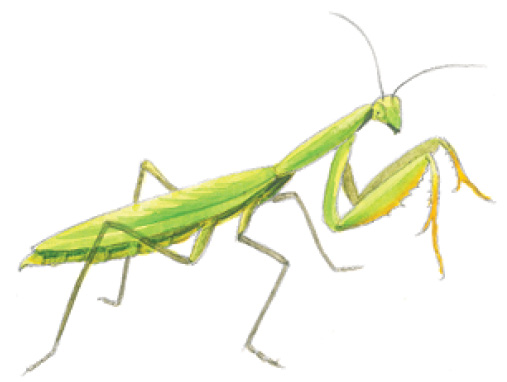
CRICKETS, GRASSHOPPERS, KATYDIDS, AND MANTIDS

Praying Mantis, Mantis religiosa
Order: Orthoptera (Crickets, Grasshoppers, Katydids, and Mantids)
Size: Up to 2 1⁄2"
Habitat: Gardens, fields
Range: Eastern and northwestern United States
Also known as the European Mantis, the Praying Mantis was introduced to North America from Europe in the late 1800s and is now common and welcome in gardens and flowerbeds across the United States. This is a long, slender insect with thin legs, an extended thorax region, and a relatively small, triangular head with big eyes and lacy antennae. Most obvious are the large, spined forelegs with a longer than usual inner segment. The color can range from green to brownish, with a dark ringed spot on the inner part of the foreleg base. Praying Mantises hunt by waiting motionless with the front legs raised in a “praying” position, then quickly grasping prey when it is in range. All manner of insects, their larvae, and spiders are eaten, including other mantids. Females create a papery egg case on twigs, which overwinters and produces a hundred or more tiny young in the spring.